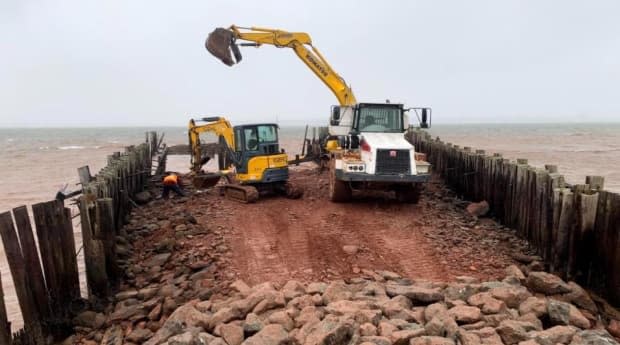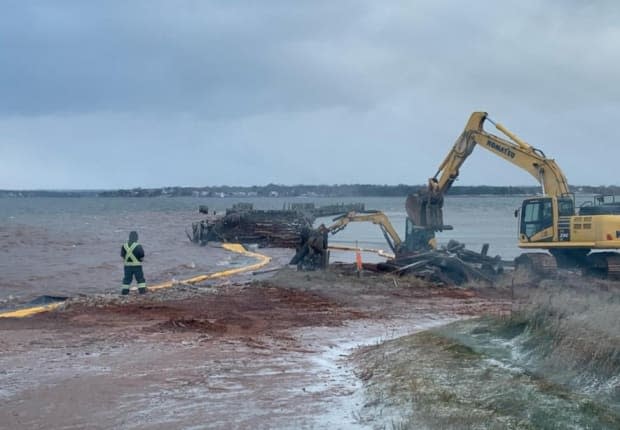Rickety wharf replaced by rocky breakwater in Charlottetown Harbour

A dilapidated but historic piece of P.E.I.'s coastal culture has been put to rest.
Work is now complete on removal of Rocky Point wharf in Charlottetown Harbour, with a rock breakwater now in its place.
"We had a number of complaints from timbers leaving the existing wharf and washing up on the beach," said Stephen Yeo, chief engineer for the province.
"It was a safety concern."
Work included removal of wood pilings, creosote planks and steel debris at the site, located in the community of Rocky Point, near the mouth of the West River in Charlottetown Harbour.
The five-week project was completed in mid-January at a cost of $450,000.
Keeping costs down
The province opted to install a rock breakwater to cap the underwater foundation of the wharf, rather than excavate and remove the structure completely.
"If we removed everything, the cost would have been probably three times what we paid," said Yeo.

Engineers also believe installation of the breakwater will minimize alteration of water flow, erosion and sand-deposition patterns where the wharf once stood.
"It shouldn't have any effect at all," said Yeo.
Rocky Point had been the site of a public wharf and ferry service since the 1800s, according to historical records, and provided a vital transportation link in the early days of the province. Improvements to roads, including construction of the West River Causeway, contributed to the wharf's decline.
In recent years, the wharf's distinctive Y-shape at its deep-water end remained visible, and now that work on the breakwater is complete, remnants of it can still be seen at low tide.

To dismantle the wharf, crews built a temporary road on top of it, to serve as a working platform for heavy equipment. As debris was removed, the temporary road was replaced with rock, to form the 145-metre long breakwater.
Seabirds, including cormorants, herring gulls and terns, had been the most prolific users of the wharf in recent years, often perching in large numbers on its sun-bleached wood frame.
The newly installed rock is not easy to walk on, and the breakwater is not intended for use by visitors.
"I don't anticipate it will draw a big crowd," said Yeo.
The province owned the wharf and continues to own the new breakwater as well as access to it, off Route 19 in Rocky Point.
Land around it remains in private ownership.
Staff will keep an eye on the new breakwater at Rocky Point through the coming year to make sure it's holding up properly, according to Yeo.
More from CBC P.E.I.

